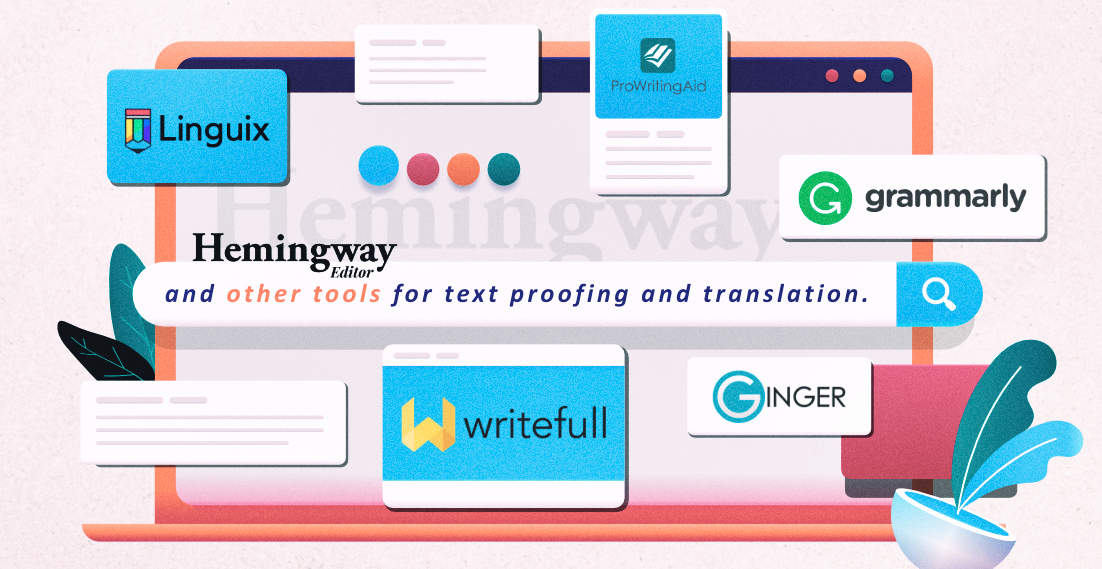Newsletters – how were they created, what are they used for and what mailing system should you choose?

A newsletter makes it possible to send emails to people who are in the recipient database of a given company (whether they are aware of it or not). Most likely, your address is included in a few or even a dozen such mailing lists. Wishing to introduce such a solution at your company, you will have to decide upon one of many newsletter mailing systems available and if you provide services to international customers, you will also have to think about translating your emails.
How was the concept of newsletters created?
Before we move on to practical information, let’s start with theory. The idea of notifying customers or readers was created years ago. The first equivalent of today’s newsletters were magazine subscriptions or all kinds of information bulletins. Their general assumption was to reach users with certain information that they sought for.
What’s interesting is that the first newsletters were created long before the Internet. You can read in Encyclopaedia Britannica that they were first used by the Dutch in the 17th century, publishing the so-called “Coranto” which was a one-page collection of the latest information from foreign magazines. Slightly later, precisely in 1704, The Boston News-letter, which is also considered the first newspaper in the USA, was published in British Colonies in North America.
What are newsletters intended for?
Although the concept of sending short information to recipients is already several hundred years old, it is only in the age of digitization that it is experiencing a real boom in popularity. And all this is due to the fact that with the development of the Internet, there are more and more users, as well as companies and institutions wishing to reach them. This is made easier by the fact that virtually everyone has their own email address, even if they only use the Internet from time to time. This means that newsletters still remain an attractive way to reach the target group with a message.
But what is a newsletter intended for? Practice has shown that the e-commerce industry is currently the most popular area for using a newsletter. News sites are eager to use them, but more often also companies operating in other industries. This is because a newsletter allows companies to provide information on the following:
- New products or services in the offer;
- New discounts;
- Latest posts on a blog or website;
- Events you organise;
- Successful activities of your company;
- Special deals;
- And about many other aspects that are important to your customers.
Why is it worth sending newsletters?
Briefly said, when you use a newsletter, you have the opportunity to reach a very precisely defined target group with a specific message, which itself has decided that it wants to receive such messages from you. On the one hand, it allows you to maintain continuous contact with customers, while on the other, achieve your sales and business goals. After implementing systems for analysing the effectiveness of mailing campaigns, you will also get accurate information about who is most willing to choose your offer. There are more potential benefits, and their source is a simple relation. The more often the customer comes across an offer, the more likely they will choose it.
What are some newsletter systems?
One thing is to think why you should send newsletters. Another thing is to choose the system you will use to send them. There are quite a few solutions on the market that differ in price, functionality, capabilities and many other aspects. Keeping in mind the fact of globalization and removing borders in international exchange, it is also worth paying attention to the aspect of multilingualism.
Freshmail
Definitely one of the most popular systems for sending newsletters. Generally, this brand has become synonymous with all mailing campaigns for many people. This is because of the multiple features it offers, and also quite an affordable price.
The most interesting possibilities of Freshmail include verification of sent emails in terms of possible classification as SPAM. It also features the option of performing A/B tests to make sure which types of messages are distinguished by the highest opening and clickthrough rates on links contained in them.
An interesting feature is also the personalization of messages depending on what exactly the user did on the website. It also features a built-in email template catalogue as well as a user friendly editor. From the point of view of a multilingual company, it is worth emphasizing that Freshmail provides the option of setting the default language matching a specific recipient group. Due to the above, already at the stage of defining the mailing list you will specify in what language the communication will be carried out and in what language the “non-editable” elements will be displayed.
However, Freshmail does not offer a free plan. The cheapest package costs USD 12 per month and provides the possibility of sending an unlimited number of emails to a maximum of 1,000 recipients. The larger the recipient base, the more Freshmail will cost you. However, it is possible to buy the number of messages that you can send without any restrictions with regard to the size of the recipient database. This is a fairly flexible solution and does not force you to use one plan – you can choose the package that works best for you.
MailerLite
The MailerLite newsletter system has very similar features. It also provides the possibility of doing A/B tests and it features built-in email templates with an editor. Interestingly, MailerLite makes integration with Google Analytics possible, so you can track the behaviour of message recipients on your website. Interesting options include configuration of sending automatic messages each time a new article appears on your blog.
At the same time, it is a much cheaper solution than Freshmail. You can send up to 12 thousand emails to a maximum of 1000 recipients for free. When you buy the lowest package for USD 10 per month, you can send unlimited newsletters to 1000 recipients. However, the price list is not as flexible as in the case of Freshmail and includes only monthly packages, differing in the size of the recipient database.
MailChimp
MailChimp is the third solution that is very popular. It is distinguished by the largest number of available features, including a very extensive system of collecting data about your customers. Even with the lowest package you can use the built-in CRM platform, as well as use many automated features such as:
- sending transaction-related emails, e.g. after adding a product to the cart;
- sending welcome and scheduled emails, as well as sending emails for special occasions such as the recipient’s birthday;
- sending emails informing users about abandoned carts.
It is also worth noting the possibility of integration with many CMS systems, such as WordPress.
MailChimp also stands out by a rich collection of email templates that you can modify as you wish.
How much is it? The free package offers numerous features and you can send an unlimited number of emails to up to 2,000 recipients. With the purchase of higher packages, not only the number of records in the mailing database increases, but you also gain access to the latest features. The most expensive plan costs USD 299 per month, but in return you get virtually a complete email marketing platform that will help you run your business
GetResponse
GetResponse is equally as advanced as MailChimp. When you decide upon this solution, you will gain a tool for organising webinars, creating landing pages, analysing sales funnels, as well as access to many other features supporting activities in the area of marketing automation.
To purchase access to GetResponse, you must choose one of three packages.
The cheapest one is USD 15 per month, and in return you get access to some features and a database of up to a thousand recipients. However, the more you expect, the more you will have to pay and for example all features and a database containing up to 100,000 recipients will cost USD 580 per month. Interestingly, you can also use an individual solution in which you can configure the package yourself according to your expectations.
How to send the newsletter in several languages?
The choice of the above systems was not accidental. Each of these solutions offers the possibility of creating several customer databases, which is useful for companies operating on several markets at the same time. This way you can create a database of English-speaking, Polish-speaking and German-speaking recipients, for instance, to whom you will send emails with varied content. All you have to do is ensure a good quality of translation of your emails, which we’ll gladly help you with – just use our convenient form to request a free quote.
Other articles:
The 7 Most Important Languages for Business
4 Reasons why you should set up a Multilingual LinkedIn Profile
Enabling website translation in different browsers
Translation of your newsletter? We will take care of it!
Marketing translation as the key to success of the fashion industry. Cooperation with a popular fashion brand
We cooperated with many customers on a daily basis. They include local companies, international enterprises and well-known brands. What are the similarities between all of them? Everyone expects high-quality translations that will help in business development. Additionally, professional translations affect their image, contribute to the opinions of recipients and are the decisive factor when it […]
Hemingway Editor and other tools for text proofing and translation
Typically, content writers first note down the message they wish to put across to their audience. Then, they re-read and edit the text. This way, they can achieve better readability, understanding and structure, and at the same time they can correct any errors in the content. It is a complex process, but fortunately there are […]
Translation of advertising slogans – how not to fall into the language trap?
Advertising translation involves the process of transferring advertising messages from one market to another. The advertising discourse is created in a language that is not only a communication tool, but also an expression of culture. This makes ad translation a highly accuracy-demanding activity. Translating slogans requires both a cultural and linguistic connection. Adapting a brand […]
TOP 8 languages for e-commerce purposes. Sourcing customers around the world
Do you manage an e-shop and want to source customers abroad to increase profit? Translations will be the basis for reaching foreign recipients with your offer. You need to start speaking their language and adjust product or service descriptions to the country where you intend to sell them. You’re probably wondering which languages to start […]



